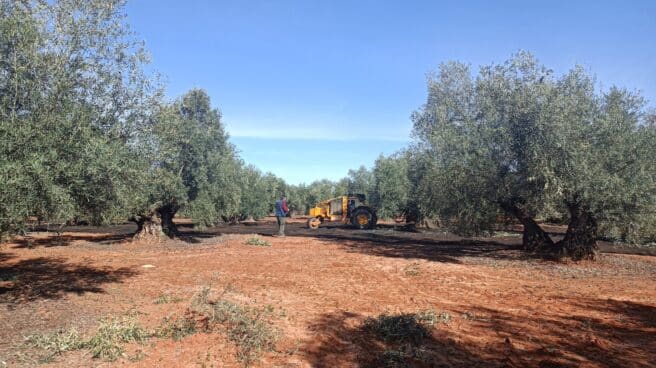

Olive grove in Antequera (Malaga).
The debate about the details of farmers’ baptism as the “new green CAP” is intensifying with its introduction. Lots of discussion eco modesSome voluntary environmental practices that offer additional rewards to the farm owner have drawn criticism from farmers as they run into “inconsistencies” that the Common Agricultural Policy (CAP) reform did not provide for “because those who do it did not tread the ground in own life”. The complaint of professionals in the field relates to the eco mode of cutting off cuttings on the soil of a tree crop. “It forces you to use more fuel, when the goal is to benefit the environment, the opposite effect is achieved. If, when cutting, the residue is left on the ground in a certain way, the machine covers this space in one pass, and if it is required to cover 40% of the width of the street, then the residue must be distributed over the entire frame and give 100 circles on the tractor, ”he laments in a conversation with Independent Ignacio Fernandez, President of the ASAJA (Young Farmers Agrarian Association) of Cordoba.
The new standard specifies that the number of trimmings to be placed on the ground, which occupy a minimum area, in each strip of 40% of the free width of the canopy projection, in order to reduce greenhouse gas emissions and increase organic carbon; however, farmers deplore the fact that in countless cases the figure is very high and that the use of machinery is on the rise. “If a smaller area is covered, the environmental goals are met without having to constantly move crushers down the street,” explains Fernandez.
Ignacio López, director of international relations and PAC ASAJA, points out to this newspaper that in order to adapt to this eco-regime, the farmer will have to use more equipment to spread crop residues and thus he will need more fuel, which is contrary to the environmental goals pursued by the standard , even though the benefits of reducing greenhouse gas emissions and increasing soil organic carbon are already being achieved in practice. “The problems come from the fact that there are standards according to which compliance with the established norms is not economically beneficial and does not achieve the goal of sustainable development,” says Lopez.
Farmers bring charges against ‘dispatching PAC’
The professional body at the time warned that the new PAC was an “increasingly complex web of bureaucracy,” which Lopez now confirms: “The takeaway is that the administration is showing they’re not in that area. These measures must be understandable and profitable, in addition, a purely ecological criterion can be applied when the farmer must think about survival. The director of international relations and PAC ASAJA emphasizes that eco-regimes should tempt the farmer to immerse himself in them. “They should provide benefits so that professionals cover the costs and receive direct consequences for their land. If money is lost due to access to the eco mode, it becomes a deterrent, the exact opposite of what they are looking for.
ASAJA Córdoba President Ignacio Fernández argues that the application of cutting residues to 40% of the free canopy width is “an absurdity that doubles work time and costs.” “It doesn’t make sense, because if there’s already a lot of cuttings, the machine has time to crush the branches in one pass and leave that stagnant cover that covers the ground and has a beneficial effect, being so big. “In this area, machinery will make more trips for the same business,” emphasizes Fernandez, who recalls that “the longer the tractor runs, emitting smoke, the worse it is for the environment.”
The fundamental novelty of this new CAP reform is eco-regimes. Although farmers are not required to use them, this is very important because, according to López, “if you don’t, you will stop collecting 25% of the total direct payments budget, which for Spain is about $1,100 million.” euro per year. “The administration needs to rethink many of these eco-modes that are contradictory. For them, they are undoubtedly the flagship of the new CAP reform, but they should consider whether the villagers are ready for this,” the ASAJA representative concludes.
Source: El Independiente